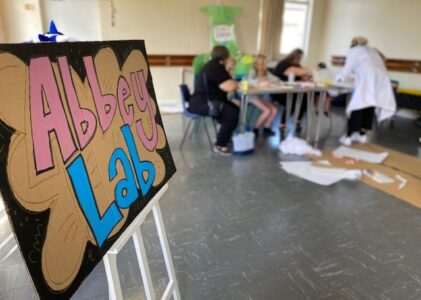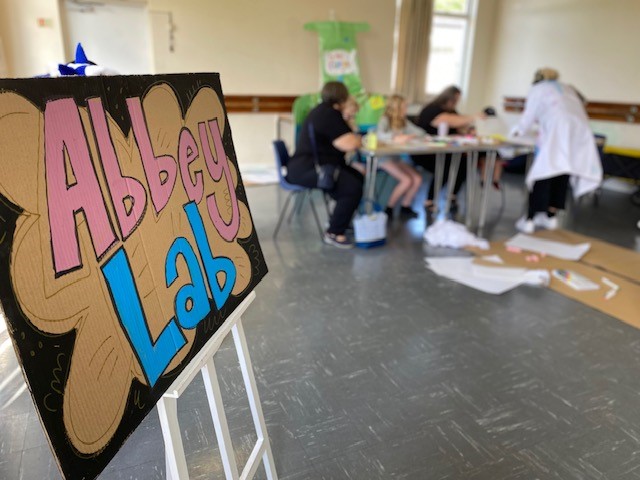
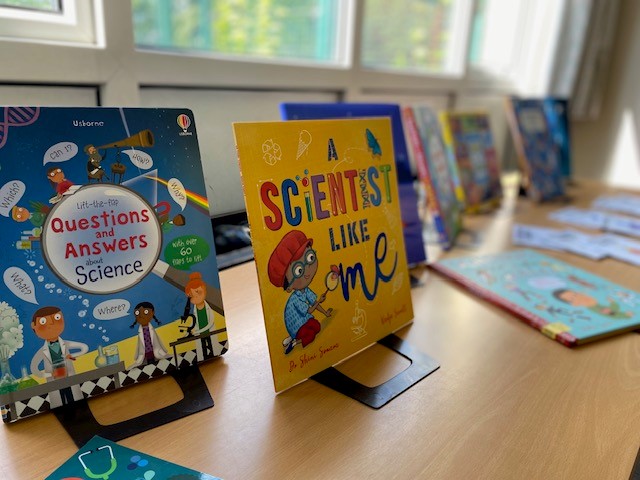
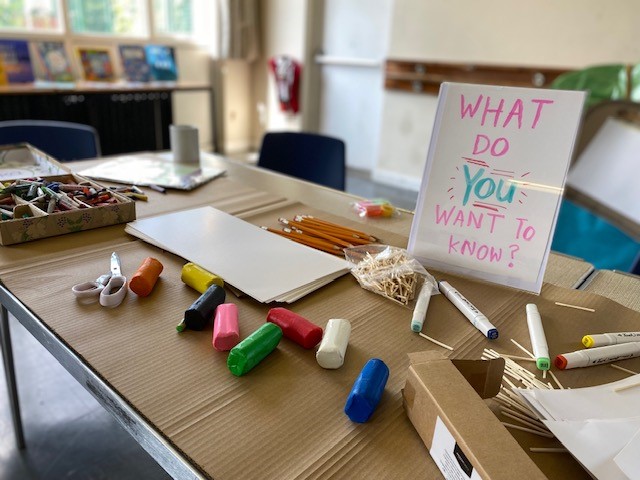
Author: Bridget Eburne
On the 25th of July 2023, I joined the Kavli Centre for Ethics, Science and the Public as their summer intern. I am a Natural Sciences student at the University of Cambridge going into my third year, where I will specialise in History and Philosophy of Science. I came across the KCESP during my work as an editor for BlueSci, the student run science magazine at Cambridge, where I worked on an interview held with Catherine Galloway, the centre’s ‘Innovation and Translation’ lead. I was fascinated by the work that the KCESP were doing, and I particularly appreciated the creative and pioneering methods that are continually used in all areas of their research, having come from a creative background as a musician as well as a science student.
On my first day with the KCESP, I attended a community science day hosted by ‘Abbey People, a local community charity that runs a number of events and activities for local families to provide practical help during times of high pressure such as the summer holidays and to support them with opportunities to improve their education and access to employment. In collaboration with local community artist, Hilary Cox-Condron, Catherine and I set up the ‘Abbey Lab’ – a pop-up lab and art studio in which children and their families could use a number of art media to ask questions and express their opinions on science and its relation to society.
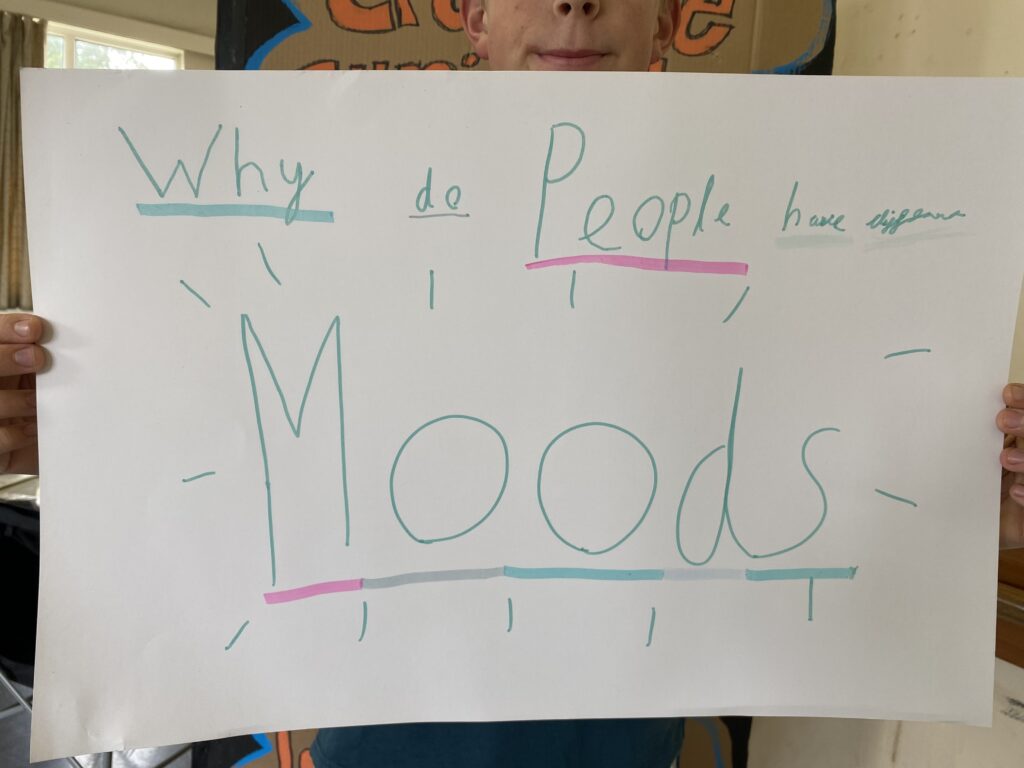
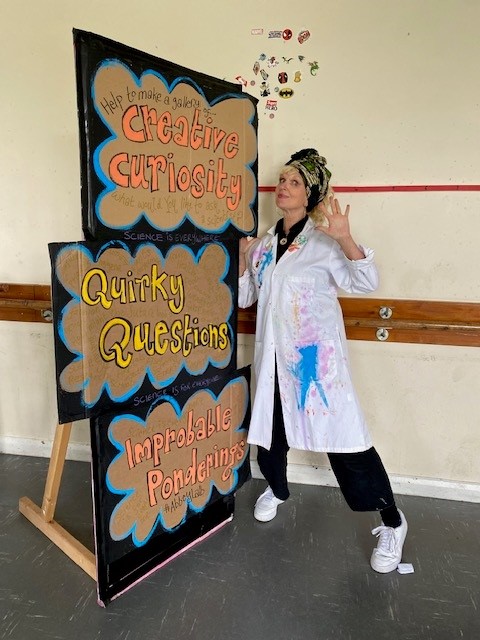
As well as a range of pens, chalk, pencils, and plasticine that children could use to draw and write, we also set up a dressing up corner for children to create outfits that they thought best showed what a scientist is. Through the array of colourful costumes available to them, participants were encouraged to look past the traditional image of a scientist in their clinical white coat, and to see instead that what made a scientist a scientist was not determined by their image, but by their inquisitive nature and ability to ask good questions. Preconceptions were further dismantled by the opportunity for children to wear the traditional white coat so often portrayed in films and books, highlighting that everyone deserves to be considered as a scientist by asking good questions, regardless of image or background. A library of fiction and non-fiction books was also available for the children to access throughout the event, with the purpose of demonstrating that anyone is capable of answering scientific questions given that they have the right materials. This also operated as a quiet space away from the busy creative areas of the ‘Abbey Lab’ allowing children to participate in whatever way felt comfortable for them.
During both the early and late sessions for under 13s and over 13s respectively, the Abbey Lab proved to be a popular place for children and parents to interact and discuss their views on science in a low-pressure and creative environment. Many thought provoking and exciting questions were asked by participants, as captured beautifully by Hilary’s gallery of ‘creative curiosity’, with a great range of our art supplies being used. Plasticine proved very popular with the youngest children, and chalk and pens were a great way for all to draw and write whatever they thought as conversations and discussions progressed, producing a vivid collage of the thoughts and ideas generated throughout the day. What struck me about the level of engagement in this area was that, after warming up a bit, the over 13s enjoyed and participated in colouring and modelling with as much enthusiasm as the under 13s. This was certainly helped by the presence of Hilary who had worked with the children before when they were at primary school, and clearly demonstrated the value of creativity as a way of making a new and potentially stressful environment feel more secure. The ‘hyper-personal’ nature of the Abbey Lab seemed to magnify all the features of a good classroom through creativity, with each participant listening and engaging in conversations in empathetic and nurturing ways. The process of learning was taken on as a cooperative and collaborative group responsibility rather than the traditional teacher-pupil dynamic, allowing less fear and anxiety around learning to be generated. This sense of security and validity in curiosity was extended beyond the children and also to the parents and guardians who, when responding to their children’s questions and ideas, became more open about asking questions themselves. Some even joined in on the dressing up, highlighting how important it is to provide creative opportunities not just as an educational resource but also as a way of strengthening family and community relationships by simultaneously soothing anxieties and inspiring active communication.
They ‘hyper-local’ nature of the Abbey Lab is something that we are aiming to replicate in future community science events across the country, and my takeaway from our first event is that local collaboration is essential for the same nurturing environment to be achieved in any location. As well as Hilary’s obvious expertise in producing the colourful environment of the Abbey Lab, her previous pupils became visibly more secure and less anxious as soon as she entered the room, again pointing towards the importance of ongoing integration of creativity with education at school. It would also be interesting to expand the library area in future iterations of the Abbey Lab, to provide more hands-on access to resources in amongst the art supplies, as well as maintaining the library as a quieter area which proved to be a more comfortable way of engaging for a number of participants. The over 13s in particular were very eager to get answers to each other’s questions, but many went straight onto Google rather than consulting a book. Next time, it would be interesting to add another layer to the discussion about science in regard to the resources people use to answer their questions and the validity and reliability of each. Rather than the reflex of criticism for children of this age to rely on technology, I think engaging them in a conversation about its importance to them may allow for some useful self-reflection, as well as provide us with a greater insight into the role of technology in building a bridge between science and the public.
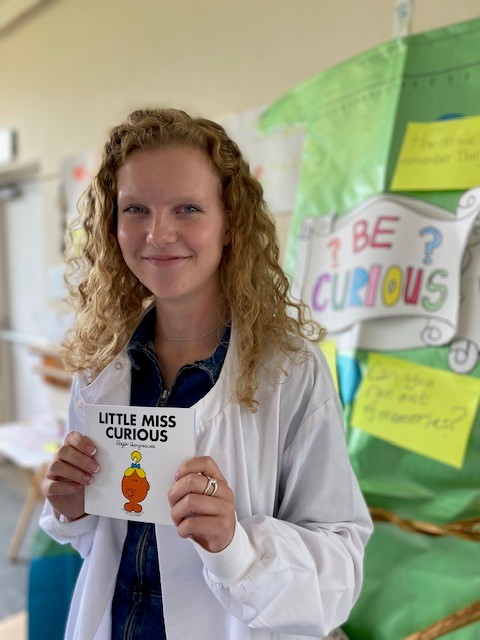
Article by Bridget Eburne, KCESP Summer Intern

